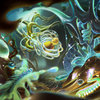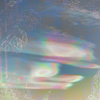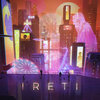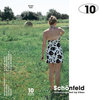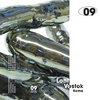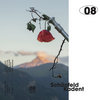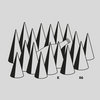Channel 7 by Tomáš Šenkyřík / Prokop Šenkyřík / Pavel Rajmic
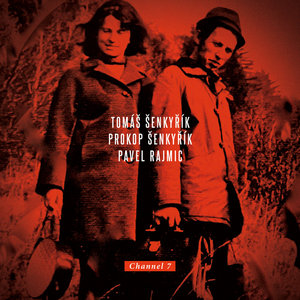
Tomáš Šenkyřík – synthetizers, sampler, field recordings
Prokop Šenkyřík – synthetizers, sampler, guitar, vocal
Pavel Rajmic – violin, double-bass
Klára Veselá – accordion
EN / CZ
From my diary:
When I started working on the album, I decided not to talk to anyone about what my initial inspiration was. Why? It seemed uninteresting to me. I had already come across music projects inspired by the poetics of the series and its characters. I wondered why I should join the crowd and try to connect the sound poetics of Twin Peaks and the genius Badalamenti with my music. Even the musicologist in me woke up and began whispering: „Analyze Badalamenti‘s music for Twin Peaks thoroughly, just as you did with Leoš Janáček‘s compositions under the guidance of Professor Miloš Štědroň, the genius composer.“ I decided to dissect Badalamenti‘s work down to the last screw. I would do a harmonic and interval analysis, analyze the form of the compositions, etc. Then, once I had that, I would remix it all into a new form. This enthusiasm lasted about a week. A month later, in the winter of 2023, I sat down and began gradually recording melodies on my Prophet synthesizer. I let myself be carried away by the atmosphere of the series, the charm and strangeness of Lynch‘s characters, and the sweetly distorted soundscapes of Angelo Badalamenti. The initial intention was to create almost static ambient surfaces complemented by field recordings that I made in the forests around Rusava. After listening to it a few times, however, I realized that I wasn‘t satisfied with the form of the individual tracks. I wanted to create more evocative, gently moving soundscapes. The kind where the listener wonders whether the music around them is standing still or evolving, whether everything around them is slowing down. But I didn‘t get that feeling from listening to it at the time.
I called my friend Klára Veselá, an excellent accordionist. I plugged in the microphones, pressed record, and let Klára improvise. I just told her to think of Audrey from Twin Peaks. She said, „Who‘s that?“ After listening to Klára‘s accordion parts, it was clear to me that she understood the atmosphere of the songs and brought energy and emotion to them that I had been missing before. She steered the whole thing in the right direction. Some time passed, and early one morning, as is my habit, I listened to the entire album in my studio. The album had moved forward, but something was still missing.
I saved the recordings on a hard drive and took them to Prokop‘s room one floor above, telling him to do something with them. Six months later, Prokop brought the hard drive back to my study. Channel 7, together with the accordion, began to take on the color and emotion that I had originally felt was missing. But it still wasn‘t quite right; I was missing something like a nostalgic anchor with a sweetly skewed tone. I made working exports and sent them to violinist Pavel Rajmic, with whom I had already recorded several albums. Pavel is a musician with an empathetic antenna in his musical brain. He can tune in quickly and accurately. All you have to do is send him the songs and say a few words. No long, witty speeches, just a few simple sentences about the soundscapes that are already within reach. Pavel recorded a huge number of violin parts and pads. The only problem was that they were all beautiful. It was clear to me that I would have to cut through the material and find the key that would open the way to interconnection.
From the outset, I was determined to avoid sounds that were directly linked to the sound aesthetics of the town of Twin Peaks. I focused on field recordings around Rusava. Most of them are actually imperceptible and indistinguishable, dissolved into individual compositions. While mixing the album, a memory came to mind. When Prokop was six years old, I took him to music school regularly. During his piano lessons, I waited in the library and often sat in the non-fiction section. I read all kinds of natural science literature, mainly about insects at that time. The room was quite dark, so they turned on the lights early. There were retro fluorescent lights that crackled, tapped, and hissed in very strange rhythms. I made an agreement with the librarians and went to record the crackling fluorescent lights on a weekend in the fall of 2016. In the end, I used them on Channel 7. I finished the last tracks on a bench by the soccer field in Rusava. Everything suddenly fell into place there: cars hauling wood from the forests, saws, a bench painted with turpentine, a black-haired lady who looked just like her... and who asked my sons who they played soccer for. Then, while listening to the tracks, I read a story that had bounced off somewhere and started to live its own life.
— Tomáš Šenkyřík, Rusava, August 14, 2025
CZ
Z deníkového záznamu:
Když jsem začínal na albu pracovat, řekl jsem si, že nebudu s nikým mluvit o tom, co bylo mým prvotním inspiračním impulsem. Proč? Připadal mi nezajímavý. Už dřív jsem narážel na hudební projekty, které se poetikou toho seriálu a jejími postavami nechávaly inspirovat. Přemýšlel jsem, proč bych měl rozšiřovat zástupy a snažit se zvukovou poetiku Twin Peaks a geniálního Badalementiho nějak propojovat se svou hudbou. Dokonce se ve mě probudil vystudovaný muzikolog, který mi začal našeptávat: „Badalementiho hudbu pro Twin Peaks důkladně analyzuj, tak jak jste to dělali se skladbami Leoše Janáčka, pod vedením pana profesora, geniálního skladatele Miloše Štědroně“. Rozhodl jsem se, že Badalementiho rozeberu do šroubku. Udělám harmonickou, intervalovou analýzu, analýzu formy skladeb atd. Pak, když to budu mít, celé to zremixuju do nového tvaru. Toto nadšení mi vydrželo asi týden. Po měsíci, v zimě 2023, jsem si sedl a začal postupně nahrávat melodie na svůj synthetizer Prophet. Nechal jsem se hodně volně unášet atmosférou seriálu, kouzlem a podivností Lynchových postav a taky sladce vychýlenými zvukovými krajinami Angela Badalementiho. Prvotním záměrem bylo vytvořit až statické ambientní plochy doplněné terénními nahrávkami, které jsem pořizoval v lesích kolem Rusavy. Po několika posleších jsem ale zjistil, že s podobou jednotlivých tracků nejsem spokojený. Chtěl jsem vytvořit více sugestivní, jemně se pohybující zvukové krajiny. Takové, u kterých se posluchač ptá, jestli ta hudba kolem něho stojí nebo se vyvíjí, všechno se kolem zpomaluje? Takový pocit jsem ale tehdy z poslechu neměl.
Zavolal jsem kamarádce a výborné akordeonistce Kláře Veselé. Zapojil jsem mikrofony, zmáčknul record a nechal Kláru improvizovat. Jen jsem jí řekl, ať myslí třeba na Audrey z Twin Peaks. Řekla: Kdo to je? Po poslechu Klářiných akordeonových vstupů mi bylo jasné, že atmosféru skladeb pochopila a vnesla do nich energii a emoce, které jsem tam předtím postrádal. Celé to správně nasměrovala. Uplynul nějaký čas a já jsem ve svém studiu brzy ráno, tak jak to mám ve zvyku, poslouchal celé album. Album se posunulo, ale ještě tomu něco chybělo.
Nahrávky jsem uložil na harddisk a odnesl je Prokopovi do pokoje o patro výš a řekl mu, ať s tím něco provede. Po půl roce Prokop přinesl harddisk zpátky ke mně do pracovny. Channel 7 začalo získávat společně s akordeonem barvu a emoce, které mi tu původně chyběly. Pořád to ale nebylo ono, postrádal jsem něco jako nostalgickou kotvu nasládle vychýlenou. Udělal jsem pracovní exporty a poslal je houslistovi Pavlu Rajmicovi, se kterým jsem natočil už několik alb. Pavel je muzikant s empatickou anténou ve svém hudebním mozku. Dokáže se naladit rychle a přesně. Stačí mu zaslat skladby a říct pár vět. Žádné sáhodlouhé duchaplné řeči, jen pár holých vět o zvukových krajinách, které jsou už nadosah. Pavel nahrál obrovské množství houslových partů a ploch. Jediná potíž byla, že byly všechny krásné. Bylo mi jasné, že budu muset materiál prostříhat a najít klíč, který mi otevře cestu ke vzájemnému propojení.
Od začátku jsem byl rozhodnutý, že se vyvaruju zvukům, které jsou nějak přímo napojené na zvukovou estetiku městečka Twin Peaks. Soustředil jsem se na terénní nahrávky kolem Rusavy. Většina z nich je vlastně nepostřehnutelná a nerozpoznatelně rozpuštěná v jednotlivých skladbách. Během mixování alba se mi vybavila jedna vzpomínka. Když měl Prokop šest let, vodil jsem ho pravidelně do ZUŠ. Během jeho hodin klavíru jsem čekával v knihovně a často sedával v oddělení naučené literatury. Pročítal jsem nejrůznější přírodovědeckou literaturu, v té době hlavně o hmyzu. Místnost to byla docela tmavá, tak tam brzy zapínali světla. Byly tam retro zářivky, které prskaly, ťukaly a syčely v hodně podivných rytmech. Domluvil jsem se s knihovnicemi a o víkendu na podzim 2016 jsem si prskající zářivky šel nahrát. Nakonec jsem je na Channel 7 použil. Poslední tracky jsem dokončil na Rusavě na lavičce u fotbalového hřiště. Všechno tam najednou do sebe zapadlo: auta svážející dřevo z lesů, pily, lavička natřená terpentýnem, černovlasá paní, jako by z oka vypadla...a která se ptala synů za koho hrají fotbal. Já jsem potom při poslechu tracků četl příběh, který se odněkud odrazil a začal žít vlastním životem.
— Tomáš Šenkyřík, Rusava, 14. 8. 2025
Mixed and produced by Tomáš Šenkyřík
Artwork by Prokop Šenkyřík
Cover photo: In front of the forest, Rusava 1970
Author foto: Bohumil Stojaník
Executive producer Michal Kořán
© 2025 Blue Lizard & Tomáš Šenkyřík
BL250
Links:
tomassenkyrik.bandcamp.com
www.pavelrajmic.cz
klaraakordeon.cz
Tracklist
| 1. | Channel 7 | 4:51 |
| 2. | Nightingale | 4:10 |
| 3. | Blue star | 5:03 |
| 4. | Old Ship | 4:14 |
| 5. | In front Of The Forest | 3:46 |
| 6. | Turning Back | 6:20 |
| 7. | Memory Of Double | 4:55 |
| 8. | Behind The Curtain | 4:03 |
| 9. | Coming Home | 4:08 |
